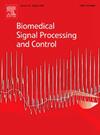基于条件经验模态分解和多尺度注意卷积神经网络的塔机驾驶员疲劳检测研究
IF 4.9
2区 医学
Q1 ENGINEERING, BIOMEDICAL
引用次数: 0
摘要
塔吊驾驶员的疲劳会造成安全隐患和严重的工作事故。因此,疲劳检测是至关重要的。在塔机驾驶员驾驶疲劳的研究领域中,基于驾驶员的脑电图信号检测方法是最常用的方法之一。然而,真实建筑环境中的噪声往往会干扰这种检测方法,导致分类精度较低。为了解决这一问题,本研究提出了一种基于条件经验模态分解和多尺度注意卷积神经网络(CEMD-MACNN)的驾驶疲劳检测模型。条件经验模态分解(CEMD)克服了传统经验模态分解(EMD)在分析信号时忽略重要信息或不能充分去除噪声成分的问题。多尺度注意卷积神经网络(MACNN)在提取不同尺度特征时,利用通道注意自适应选择包含疲劳特征的通道,从而提高模型的抗噪声能力,抑制噪声的影响。本研究对塔机驾驶员进行了驾驶疲劳检测实验。采用Emotiv装置采集10名被试在7个驾驶阶段的脑电信号,并采用Karolinska嗜睡量表(KSS)将脑电信号分为清醒状态和疲劳状态。结果表明,CEMD-MACNN方法对10个受试者的平均分类准确率达到98.70%。与其他传统方法相比,CEMD-MACNN具有更好的抗噪声性能和更高的分类精度。本文章由计算机程序翻译,如有差异,请以英文原文为准。
Study on tower crane drivers’ fatigue detection based on conditional empirical mode decomposition and multi-scale attention convolutional neural network
Tower crane drivers’ fatigue may cause safety hazards and serious work accidents. Therefore, the detection of fatigue is critically important. In the research field of driving fatigue of tower crane drivers, the detection method of electroencephalogram (EEG) signals based on drivers is one of the most commonly used methods. However, noise in the real building environment often disrupts this type of detection method, leading to low classification accuracy. To solve this problem, this study proposes a driving fatigue detection model based on conditional empirical mode decomposition and multi-scale attention convolutional neural network (CEMD-MACNN). Conditional empirical mode decomposition (CEMD) overcomes the problem that traditional empirical mode decomposition (EMD) ignores important information or does not sufficiently remove the noise component when analyzing the signal. A multi-scale attention convolutional neural network (MACNN) uses channel attention to adaptively select channels containing fatigue features when extracting features at different scales, thus improving the model’s noise immunity and suppressing the influence of noise. In this study, the driving fatigue detection experiment of tower crane drivers was carried out. The Emotiv device was used to collect the EEG signal of 10 subjects in 7 driving stages, and the EEG signals were divided into awake state and fatigue state using the Karolinska sleepiness scale (KSS). The results showed that the CEMD-MACNN methods achieved an average classification accuracy of 98.70% across 10 subjects. Compared with other traditional methods, CEMD-MACNN has better anti-noise performance and higher classification accuracy.
求助全文
通过发布文献求助,成功后即可免费获取论文全文。
去求助
来源期刊

Biomedical Signal Processing and Control
工程技术-工程:生物医学
CiteScore
9.80
自引率
13.70%
发文量
822
审稿时长
4 months
期刊介绍:
Biomedical Signal Processing and Control aims to provide a cross-disciplinary international forum for the interchange of information on research in the measurement and analysis of signals and images in clinical medicine and the biological sciences. Emphasis is placed on contributions dealing with the practical, applications-led research on the use of methods and devices in clinical diagnosis, patient monitoring and management.
Biomedical Signal Processing and Control reflects the main areas in which these methods are being used and developed at the interface of both engineering and clinical science. The scope of the journal is defined to include relevant review papers, technical notes, short communications and letters. Tutorial papers and special issues will also be published.
 求助内容:
求助内容: 应助结果提醒方式:
应助结果提醒方式:


